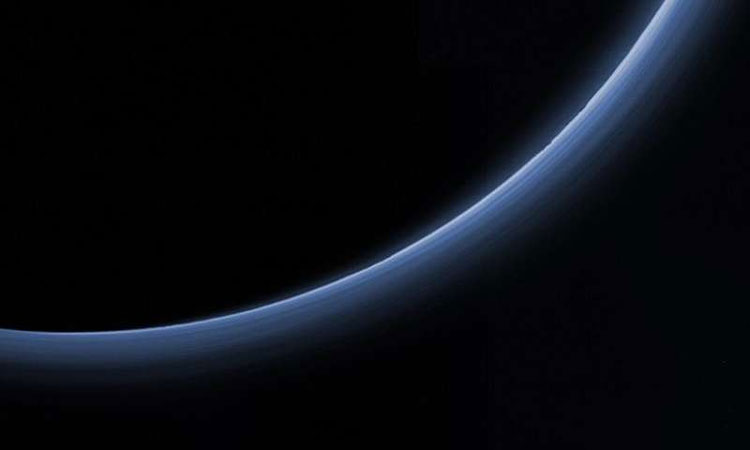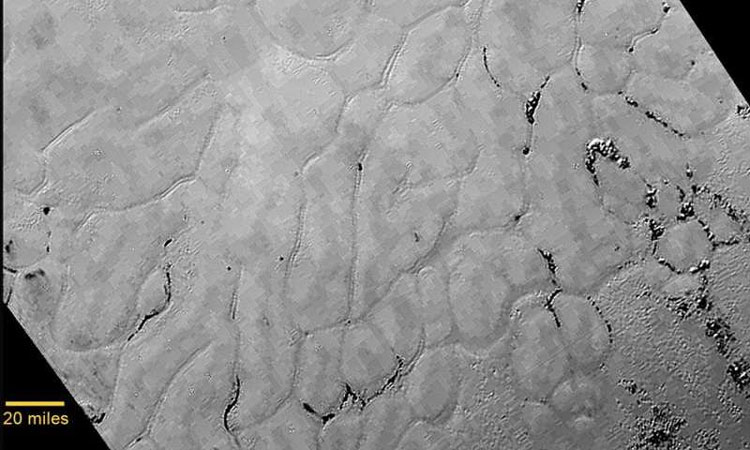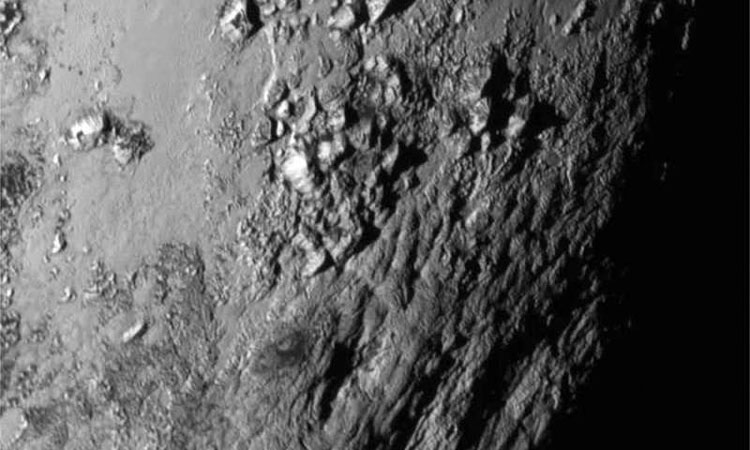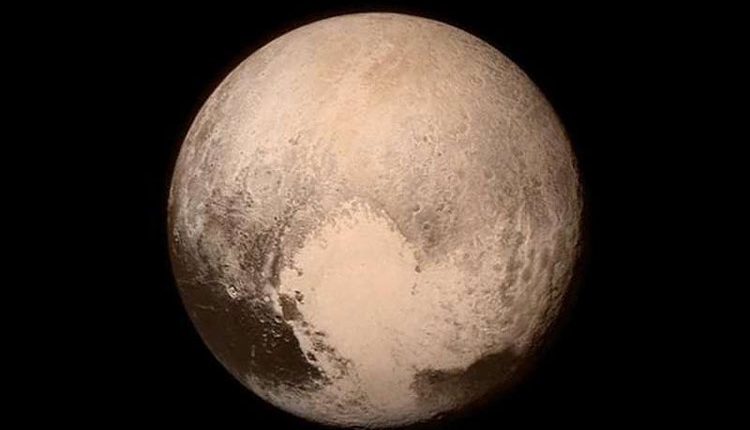Pluto to be promoted to planet again?
Regardless of what one prestigious scientific organization says to the contrary, Pluto is a planet, according to Johns Hopkins University scientist Kirby Runyon. So is Europa, commonly known as a moon of Jupiter, and the Earth’s moon, and more than 100 other celestial bodies in our solar system that are denied this status under a prevailing definition of “planet.”
The definition approved by the International Astronomical Union in 2006 demoted Pluto to “non-planet,” thus dropping the number of planets in our solar system from nine to eight. The change—a subject of much scientific debate—made no sense, says Runyon, lead author of a short paper making the pro-Pluto argument that will be presented next week at a scientific conference in Texas.
Icy, rocky Pluto had been the smallest of the nine planets, its diameter under three-quarters of the moon and nearly a fifth of the Earth. Still, says, Runyon, who is finishing his doctorate this spring in the Krieger School of Arts and Sciences’ Department of Earth and Planetary Sciences, Pluto “has everything going on on its surface that you associate with a planet. … There’s nothing non-planet about it.”
Runyon, whose doctoral dissertation focuses on changing landscapes on the moon and Mars, led a group of six authors from five institutions in drafting the definition and its justification that will be presented at the Lunar and Planetary Science Conference’s poster session. The poster will be on view for a full day on March 21 at the conference sponsored by the Lunar and Planetary Institute, and Runyon will be on hand for at least three hours to answer questions about it.

The other authors are: S. Alan Stern and Kelsi Singer of the Southwest Research Institute in Boulder, Colorado; Tod Lauer of the National Optical Astronomy Observatory in Tucson, Arizona; Will Grundy of the Lowell Observatory in Flagstaff, Arizona; and Michael Summers of George Mason University in Fairfax, Virginia.
All the authors are science team members on the New Horizons mission to Pluto, operated for NASA by the Johns Hopkins University Applied Physics Laboratory. In the summer of 2015, the New Horizons spacecraft became the first to fly by Pluto, some 4.67 billion miles from Earth, passing within 8,000 miles and sending back the first closeup images ever made of Pluto.
Runyon and his co-authors argue for a definition of ‘planet’ that focuses on the intrinsic qualities of the body itself, rather than external factors such as its orbit or other objects around it. In a short paragraph, they define a planet as “a sub-stellar mass body that has never undergone nuclear fusion” and that has enough gravitational heft to maintain a roughly round shape, even if it bulges at the equator because of a three-way squeeze of forces created by its gravity and the influence of both the sun and a nearby larger planet.
This definition differs from the three-element IAU definition in that it makes no reference to the celestial body’s surroundings. That portion—which required that a planet and its satellites move alone through their orbit—excluded Pluto. Otherwise, Pluto fit the IAU definition: it orbits the sun and it is massive enough that the forces of gravity have made it round.
Stern has argued in the past that the IAU definition also excludes Earth, Mars, Jupiter, and Neptune, which share their orbits with asteroids.

The new geophysical definition omits stars, black holes, asteroids, and meteorites, but it includes everything else in our solar system. It would expand the number of planets from eight to approximately 110.
That expansion is part of the appeal of the new definition, says Runyon. He says he would like to see the public more engaged in solar system exploration. As the very word “planet” seems to carry a “psychological weight,” he figures that more planets could encourage that public interest.
The new definition, which does not require approval from a central governing body, is also more useful to planetary scientists. Most of them are closely affiliated with geology and other geosciences, thus making the new geophysical definition more useful than the IAU’s astronomical definition.
He has some reason to be optimistic, as the new definition has already been adopted by Planet Science Research Discoveries, an educational website founded by scientists at the University of Hawaii at Mānoa.
“I want the public to fall in love with planetary exploration as I have,” said Runyon. “It drives home the point of continued exploration.”



Comments are closed, but trackbacks and pingbacks are open.